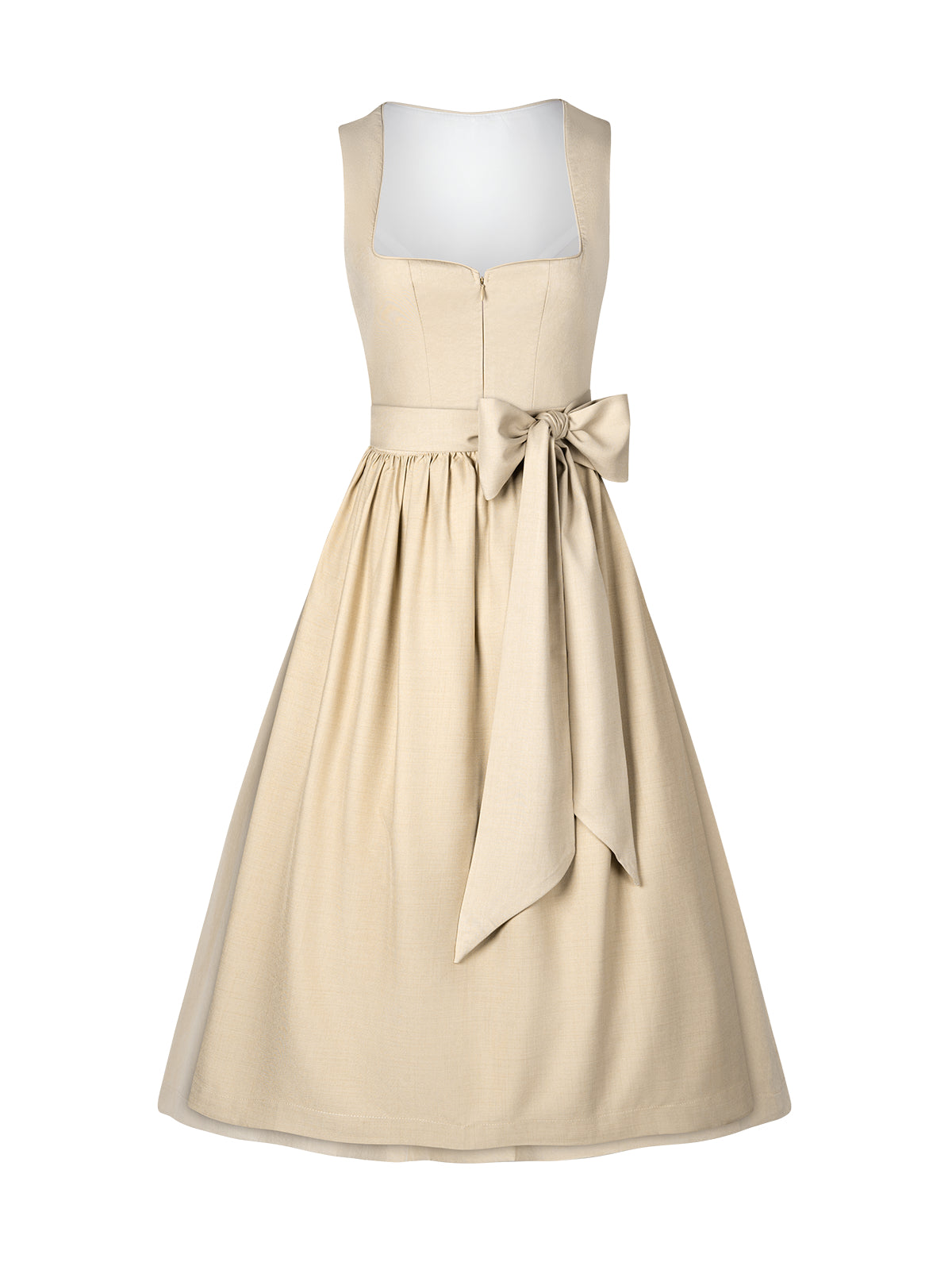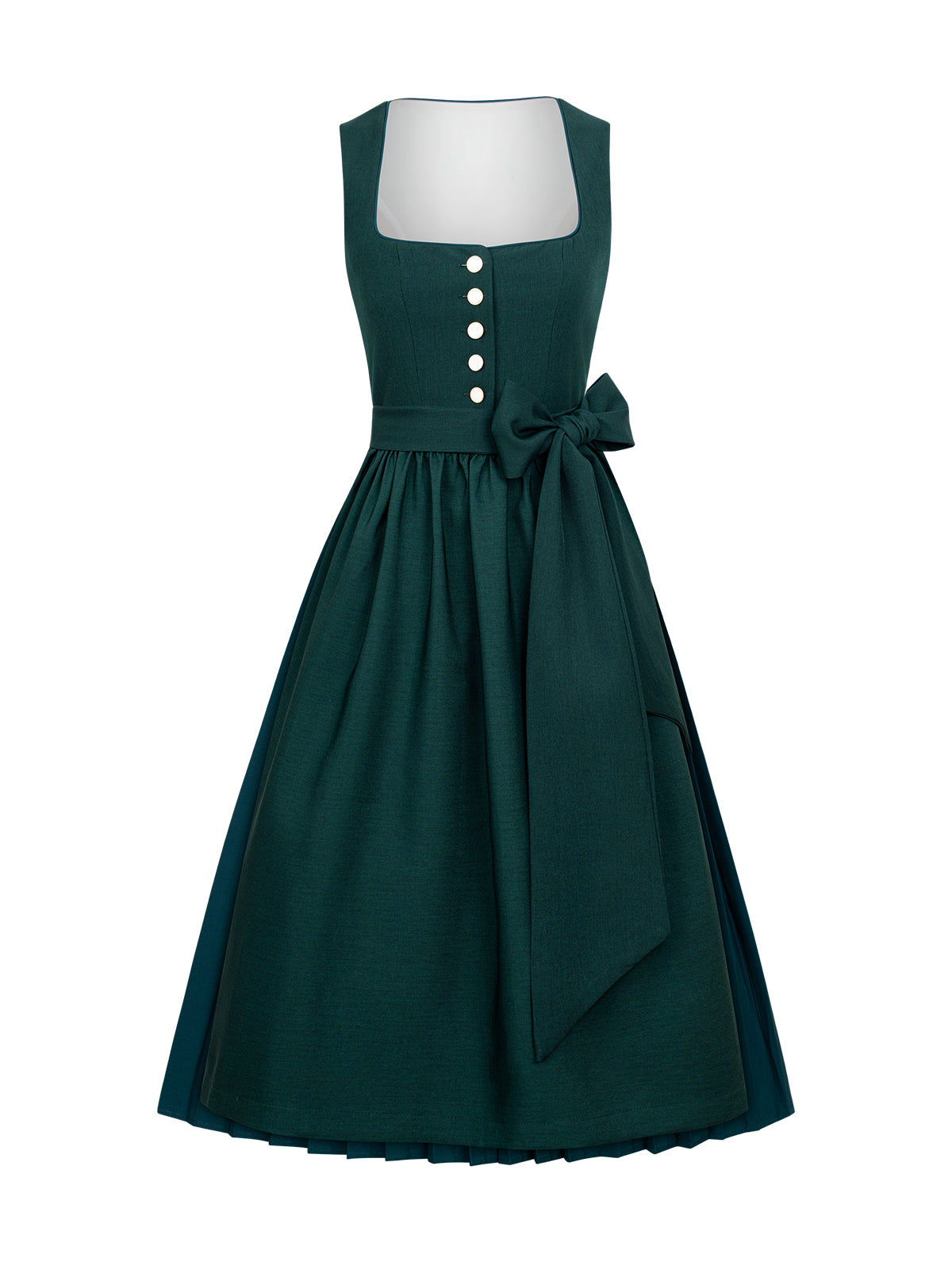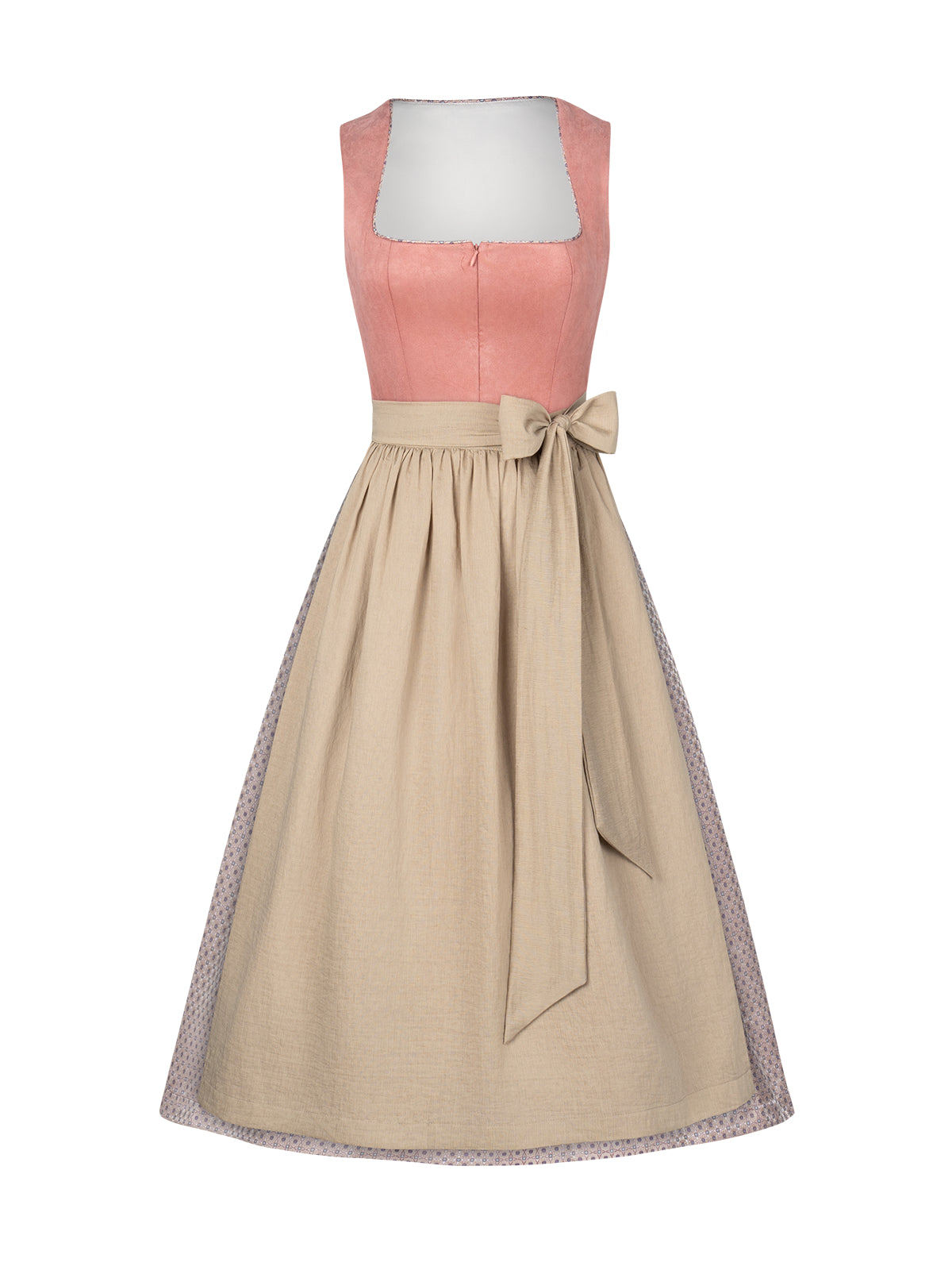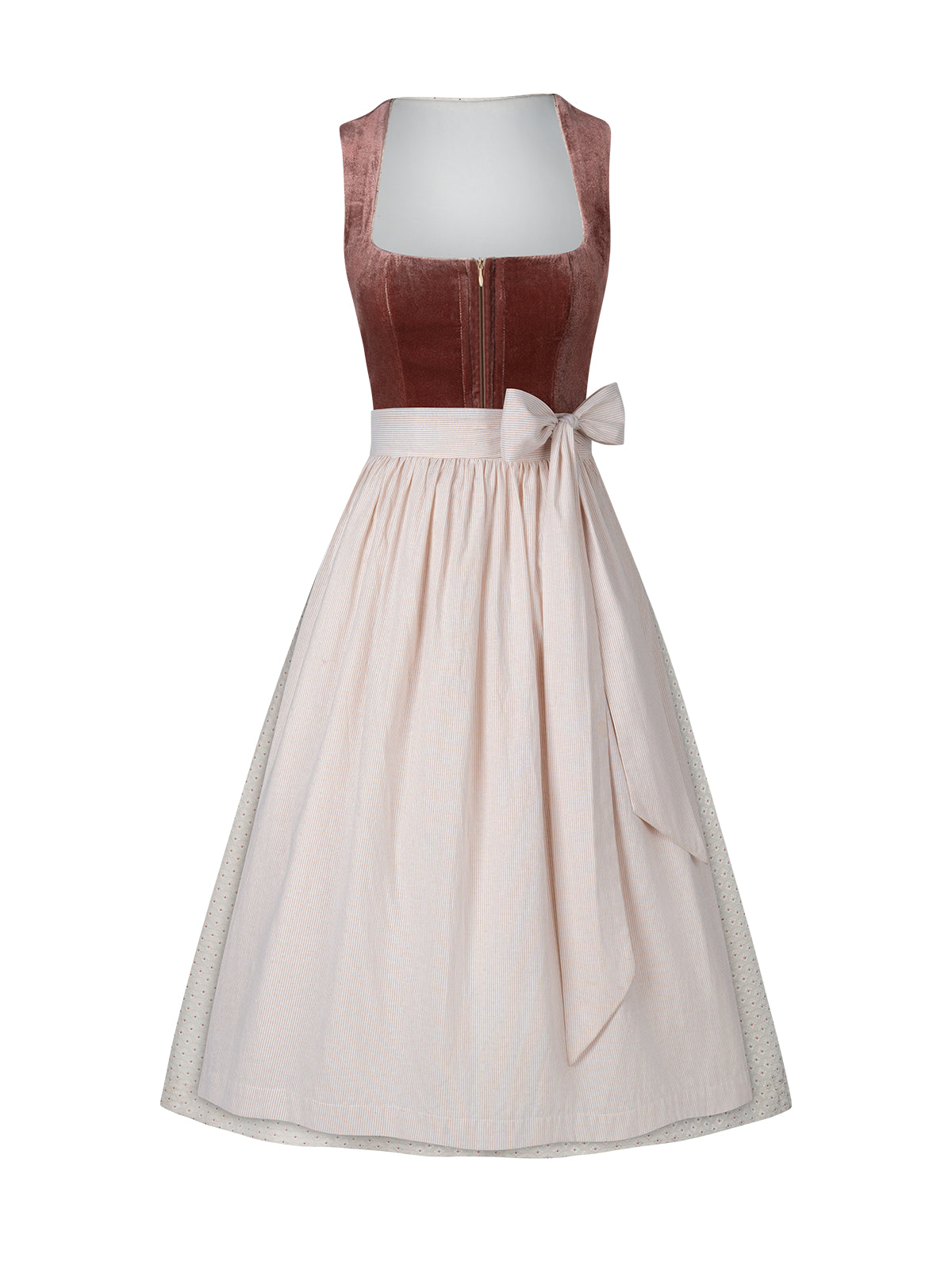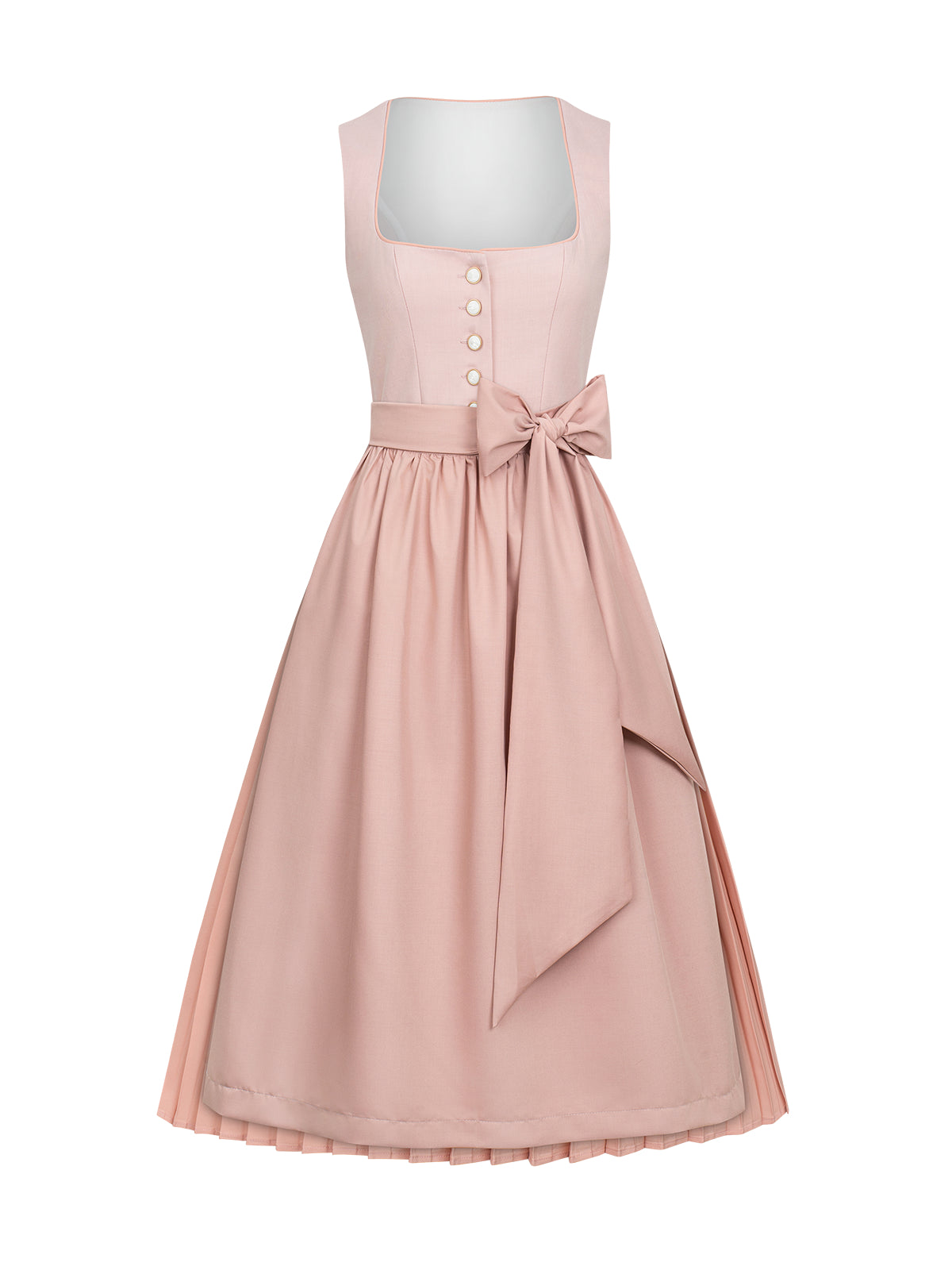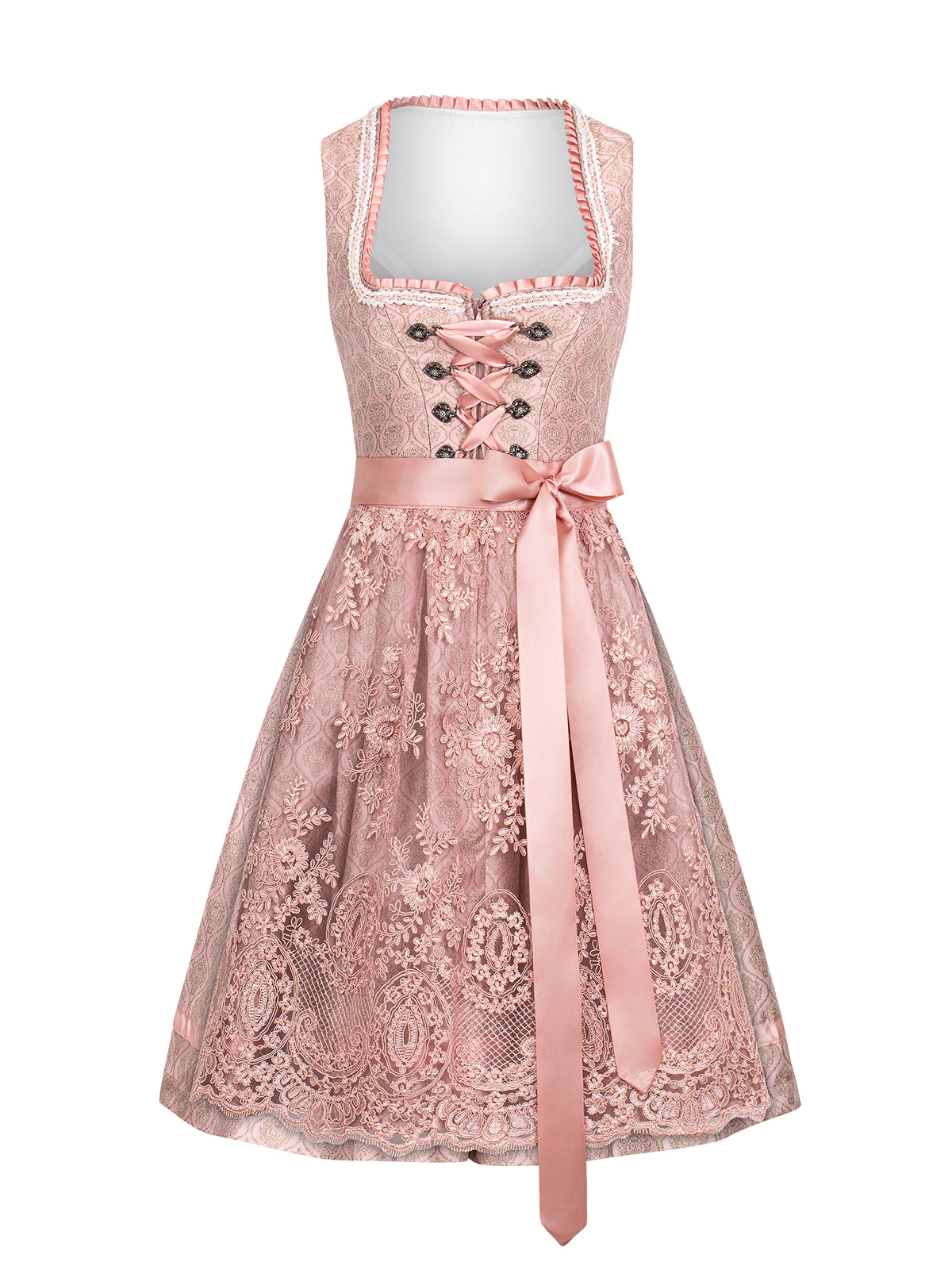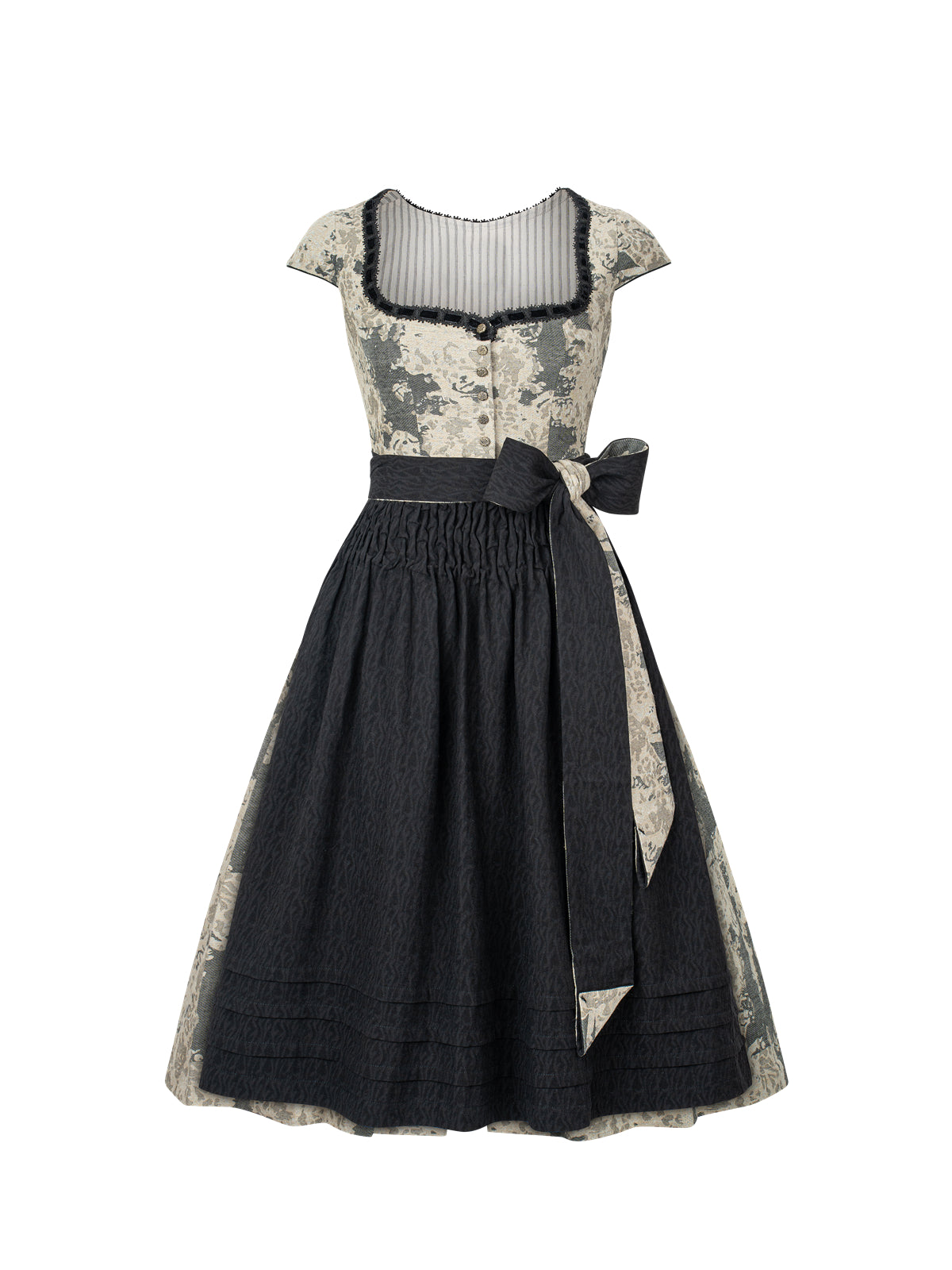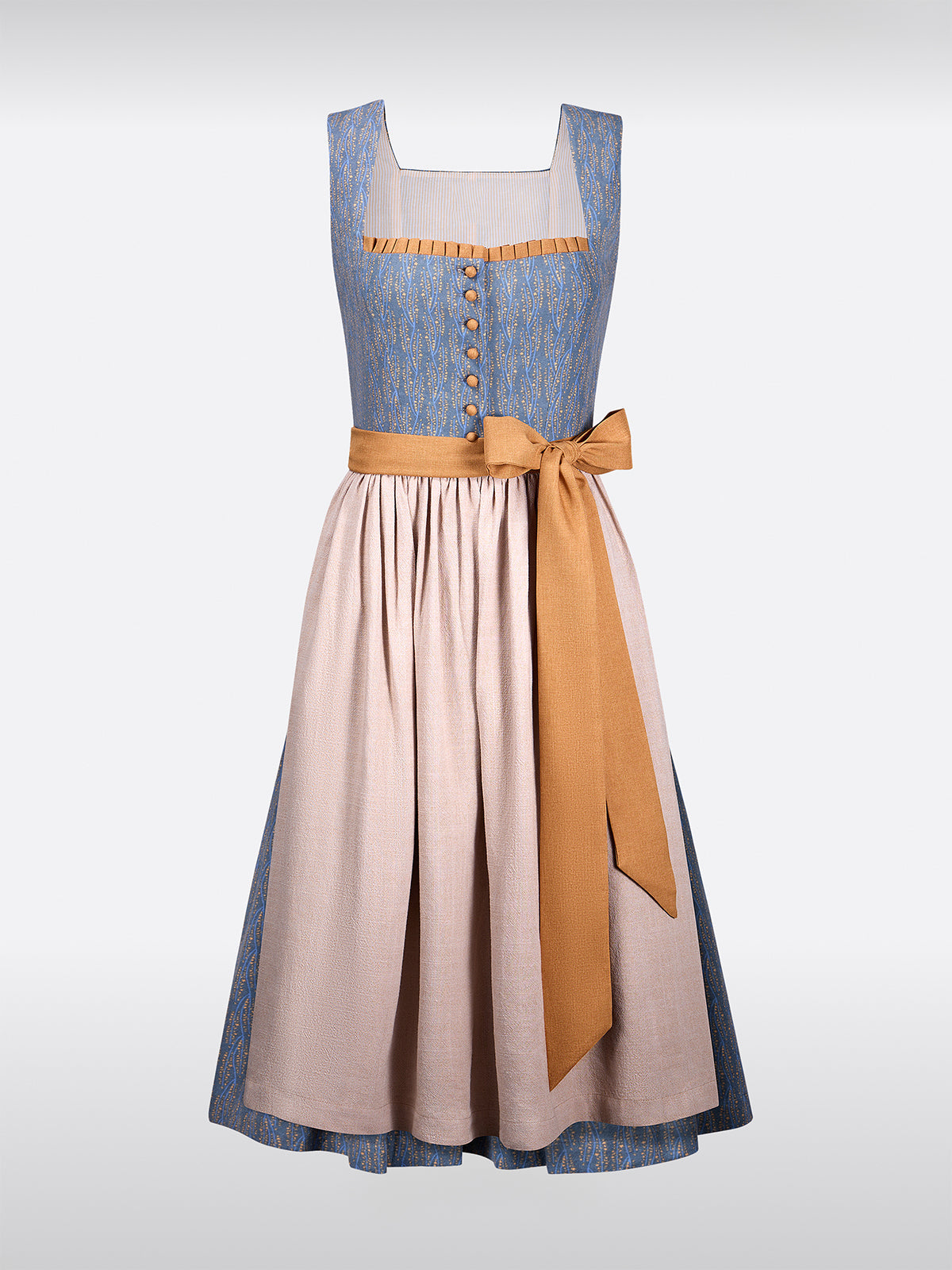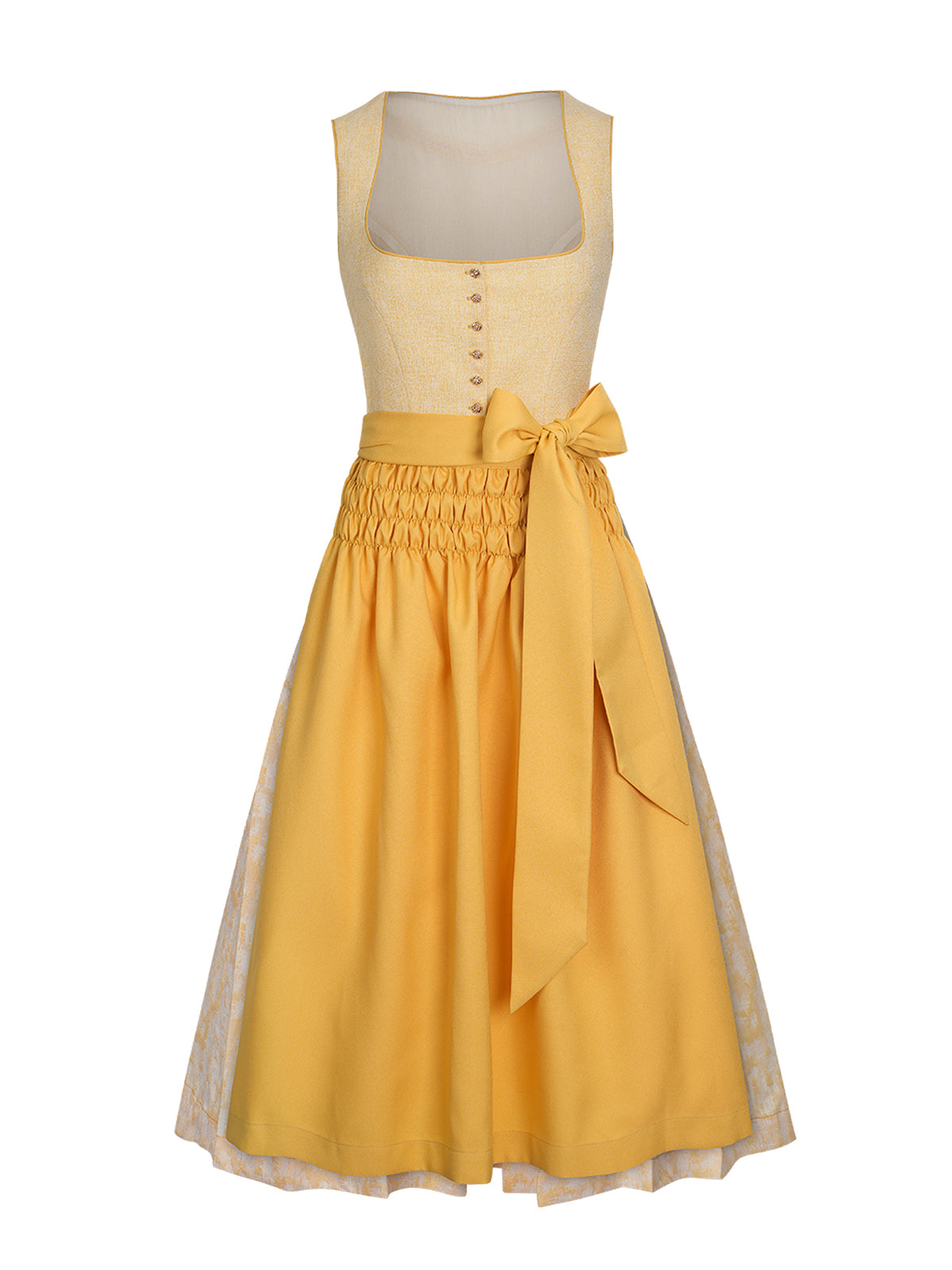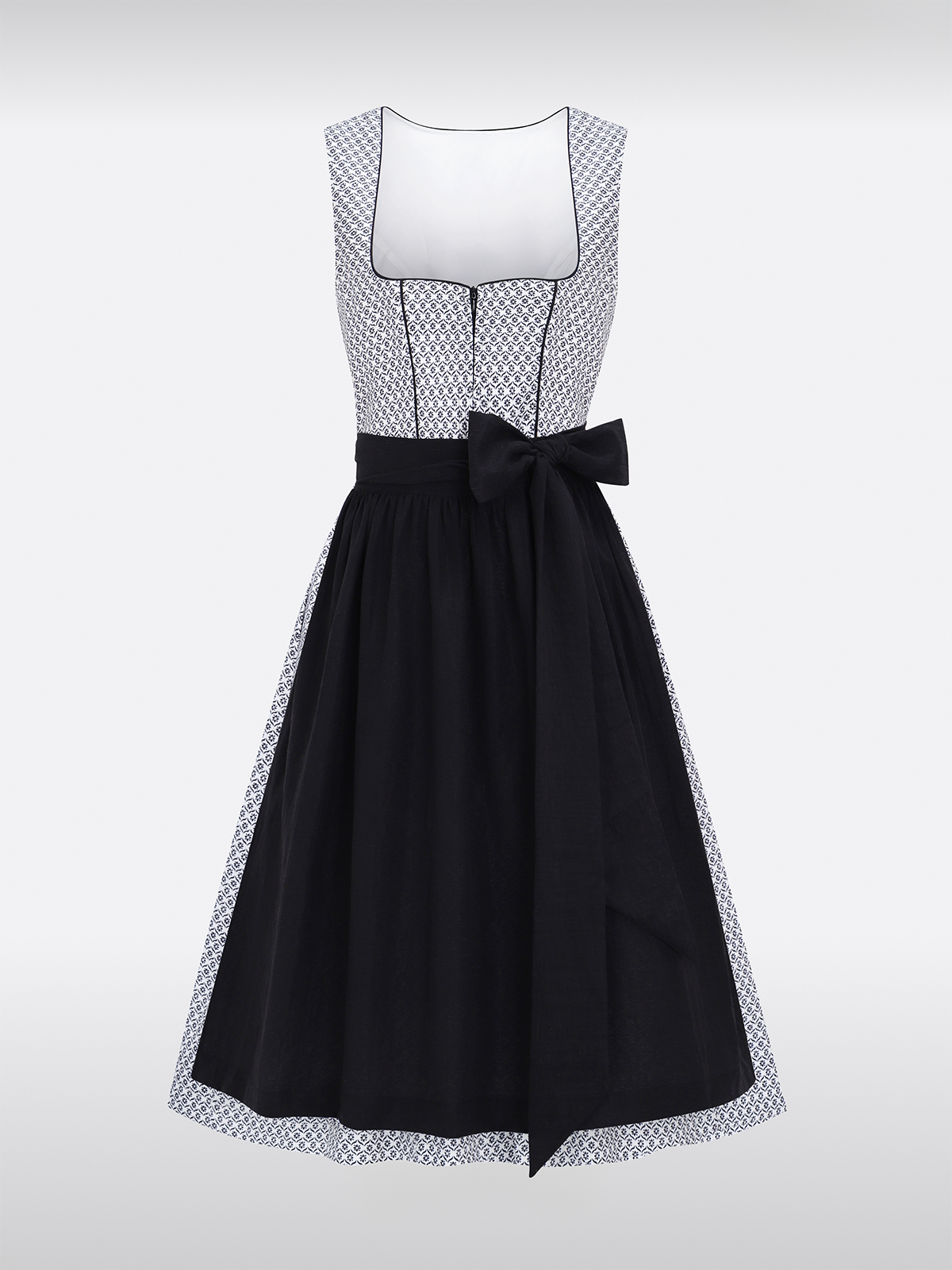The history of the dirndl is a fascinating journey through a thousand years of German culture, fashion, and identity. What was once intended as practical workwear for peasant women in the Alpine regions has evolved over the centuries into a symbol of folk culture and, today, a sought-after fashion statement at the Munich Oktoberfest. This transformation not only reflects social changes but also demonstrates how traditional clothing adapts to new times while preserving its essence.
The origins in the 14th century: The work clothes of the Alpine peasants
In the 14th century, the garment that would later become the dirndl originated in the Alpine regions of Bavaria, Austria, and Switzerland. At that time, however, it was nothing more than a practical work dress for peasant women and maids. These early traditional costumes consisted of several layers: a tight-fitting bodice, a wide skirt, and an apron to protect the belt.
The color scheme of these historical garments was usually simple and functional. The dirndl dark blue, as this color was robust and compatible with the wood-fired laundry of the time. blue dirndl was not only durable, but also a symbol of modesty and practical living. The materials were simple: linen, coarse cotton, and later also wool.
The apron, so characteristic of the dirndl today, served a very practical purpose back then: It protected the dress from dirt and wear during the hard physical labor on the farm. The various knots and folds of the apron even revealed the wearer's marital status—a detail that has been preserved in traditional costume culture to this day.
The aristocratic transformation in the 19th century
The 19th century marked a decisive turning point in the development of the dirndl. With the rise of German national consciousness and the Romantic movement, the upper classes also discovered an interest in traditional folk culture. The simple peasant dress became a symbol of the authentic German soul.
Under the influence of the Prussian royal family and the emerging traditional costume movement, the dirndl underwent a sophisticated refinement. The simple linen fabrics were replaced by finer materials, embroidery and trimmings were added, and the color palette was significantly expanded. While the traditional dirndl dark blue remained popular, red, green and white were now added.
Prussian court culture significantly influenced the development of the modern dirndl. Aristocratic ladies began wearing refined versions of folk dress—not as a caricature, but as a homage to German folk culture. This new costume became both a status symbol and an expression of patriotic sentiment.
During this period, the dirndl's current form was established: the tight-fitting bodice with buttons or lacing, the wide, pleated skirt, and the apron with its characteristic ribbons. The quality of workmanship improved significantly, and the dirndl became a garment that could be worn at both folk festivals and social occasions.
The commercial renaissance after the Second World War
After World War II, Germany faced the task of redefining its cultural identity. The traditional costume culture, which had been abused during the Nazi era, had to be reevaluated and freed from its ideological entanglements. This was achieved primarily through the development of a tourist-oriented traditional costume market.
The Munich Oktoberfest, which was resumed after the war, played a crucial role in this. Thousands of visitors from all over the world came to Bavaria to experience German folk culture—and, of course, to dress accordingly. This tourism created a new demand for authentic traditional costumes, which, however, had to be mass-produced.
During this time the first dirndl online store Concepts that enabled people from all over the world to obtain authentic Bavarian costumes. Production was standardized, but at the same time the blue dirndl one of the most sought-after products. dirndl dark blue became a classic that appealed to both tourists and locals alike.
The quality of commercially produced dirndls varied considerably. While some manufacturers continued to rely on traditional materials and craftsmanship, others produced mass-produced items at affordable prices. This led to a certain diversification of the market: on the one hand, there were high-quality pieces for collectors and connoisseurs, and on the other, affordable versions for occasional wearers.
The modern renaissance: punk, bohemian and designer costumes
The 1990s and 2000s brought a new wave of dirndl innovation. Young designers discovered the potential of traditional clothing for modern fashion. Inspired by punk and boho-chic trends, they began combining the classic dirndl with new elements.
The blue dirndl suddenly became a statement piece of the modern street style scene. Designers experimented with different shades of blue – from classic navy to deep sapphire tones. dirndl dark blue became a symbol of timeless elegance that could be worn both at Oktoberfest and in the city.
Modern dirndl designs incorporate elements from punk culture: metal details, unusual cuts, contrasting colors. At the same time, many designers also draw on bohemian aesthetics: flowing fabrics, ethnic patterns, natural materials. This fusion of traditional and modern elements has led to the dirndl becoming a trendy item again.
Online marketing has accelerated this process. Today, there are countless dirndl online store on the Internet, which supply customers from all over the world with authentic and modern dirndl variations. The selection is enormous: from the traditional dirndl dark blue to avant-garde designer pieces.
The color psychology of the blue dirndl
The color blue has a special meaning in German culture. It stands for loyalty, stability, and trust – qualities traditionally associated with Bavarian folk culture. blue dirndl is therefore not just a piece of clothing, but also a cultural statement.
The dirndl dark blue has the advantage of being wearable both during the day and in the evening. It looks serious yet cheerful, traditional yet modern. This versatility makes it one of the most popular color variations in dirndl online store Offer.
Materials and quality in the modern dirndl market
Today we offer dirndl online store an incredible variety of materials. Traditional linen and cotton variants stand alongside modern microfibers and silk blends. The quality ranges from inexpensive mass-produced items to handmade designer pieces.
A high-quality blue dirndl A shirt made of genuine linen or silk can cost several hundred euros, while a simple polyester model can be purchased for under 50 euros. The choice of material influences not only the price but also the comfort and durability of the garment.
The future of the dirndl
The future of the dirndl lies in the balance between tradition and innovation. While the classic shapes and colors such as the dirndl dark blue remain popular, modern fashion will continue to produce new interpretations. Digital marketing through dirndl online store will further accelerate and globalize this process.
The dirndl has made its journey from simple workwear to international fashion. It remains exciting to see what new facets this traditional garment will reveal in the future.

